Orderly Charging Control of Electric Vehicles: A Smart Meter-Based Approach
Abstract
1. Introduction
- No additional investment on newly installed controllers is required, such as RTUs (remote terminal units) or DTUs (data transfer units);
- No additional investment on EV-to-cloud communication is required; existing advanced metering infrastructure (AMI) can be reused;
- Better compatibility across EV makes, due to no hardware/software upgrades to EV’s local controller;
- Inheriting utility billing methods to facilitate business schemes for EV–grid interaction.
- The communication interface between the smart meter and EV’s onboard controller has to be conveniently and reliably established;
- A distributed OCC algorithm has to be simple to implement yet scalable in existing AMI systems, so as to respond to operational requirements.
2. Problem Statement of Orderly Charging Control
3. Smart Meter-Based Control Scheme
3.1. EV Communication Interface
3.2. Meter-Side Control Module
3.3. Communication Protocol
4. Orderly Charging Control Algorithm
- Day-ahead baseline load forecasting, including total EV charging load and household load, as described in Section 4.1. It provides us a general baseline to be considered in the optimization formulation.
- Event-driven scheme, determining when and how to trigger the (re-)solution of the optimization formulation, which is explained with details in Section 4.2.
- Optimization formulation, it optimally determines or adjusts the EV charging time slot and corresponding current limit using a linear programming program, which is covered in Section 4.3.
4.1. EV and Load Prediction
4.2. Event-Driven Scheme
- EV plug-in event;
- Transformer loading rate warning event;
- Fixed timer to start a new day (the beginning of a day);
- Significant deviation between forecast and actual load observed event.
4.3. Optimization Formulation
4.3.1. Sets, Parameters, and Variables
- Maximum charging power , which is commonly or kW for most AC piles used in China;
- Current SOC in terms of energy ;
- Expected departure time, in terms of the number of the time interval, ;
- Expected SOC at the time of departure, in terms of energy, .
4.3.2. Objective Function
4.3.3. Constraints
5. Numerical Results
6. Field Test
6.1. Pilot Project Description
6.2. Historical Charging Data Analysis
6.3. OCC Results
7. Conclusions
Author Contributions
Funding
Data Availability Statement
Acknowledgments
Conflicts of Interest
References
- Ayoade, I.A.; Longe, O.M. A Comprehensive Review on Smart Electromobility Charging Infrastructure. World Electr. Veh. J. 2024, 15, 286. [Google Scholar] [CrossRef]
- Development and Reform Commission of Zhejiang Province. Temporary Measures for the Construction, Operation, and Management of Electric Vehicle Charging Infrastructure in Zhejiang Province; Technical Report; Development and Reform Commission of Zhejiang Province: Hangzhou, China, 2023.
- Development and Reform Commission of Zhejiang Province. Zhejiang Province High-Quality Construction Electric Vehicle Infrastructure Special Action Plan; Technical Report; Development and Reform Commission of Zhejiang Province: Hangzhou, China, 2023.
- Powell, S.; Cezar, G.V.; Min, L.; Azevedo, I.M.L.; Rajagopal, R. Charging infrastructure access and operation to reduce the grid impacts of deep electric vehicle adoption. Nat. Energy 2022, 7, 932–945. [Google Scholar] [CrossRef]
- Aoun, A.; Adda, M.; Ilinca, A.; Ghandour, M.; Ibrahim, H. Dynamic Charging Optimization Algorithm for Electric Vehicles to Mitigate Grid Power Peaks. World Electr. Veh. J. 2024, 15, 324. [Google Scholar] [CrossRef]
- Xia, L.; Hong, X.; Sun, X.; Li, Q.; Wu, H.; Huo, Y.; Geng, G. Mitigation of Distribution Transformer Overloading with Rolling-Horizon Optimization of Vehicle-to-Grid Resource. In Proceedings of the 2024 3rd Conference on Fully Actuated System Theory and Applications (FASTA), Shenzhen, China, 10–12 May 2024; pp. 1123–1128. [Google Scholar] [CrossRef]
- Tang, W.; Bi, S.; Zhang, Y.J. Online Charging Scheduling Algorithms of Electric Vehicles in Smart Grid: An Overview. IEEE Commun. Mag. 2016, 54, 76–83. [Google Scholar] [CrossRef]
- Clement-Nyns, K.; Haesen, E.; Driesen, J. The Impact of Charging Plug-In Hybrid Electric Vehicles on a Residential Distribution Grid. IEEE Trans. Power Syst. 2010, 25, 371–380. [Google Scholar] [CrossRef]
- Crozier, C.; Morstyn, T.; Deakin, M.; McCulloch, M. The case for Bi-directional charging of electric vehicles in low voltage distribution networks. Appl. Energy 2020, 259, 114214. [Google Scholar] [CrossRef]
- Chen, S.; Lang, H.; Wan, M.; Du, J.; Bao, F.; Geng, G. Operational Flexibility Enhancement with Aggregated Electric Vehicles based on Virtual Energy Storage Model. In Proceedings of the 2024 3rd Conference on Fully Actuated System Theory and Applications (FASTA), Shenzhen, China, 10–12 May 2024; pp. 110–115. [Google Scholar] [CrossRef]
- Weng, Z.; Zhou, J.; Song, X.; Jing, L. Research on Orderly Charging Strategy for Electric Vehicles Based on Electricity Price Guidance and Reliability Evaluation of Microgrid. Electronics 2023, 12, 4876. [Google Scholar] [CrossRef]
- Wang, F.; Xiang, B.; Li, K.; Ge, X.; Lu, H.; Lai, J.; Dehghanian, P. Smart Households’ Aggregated Capacity Forecasting for Load Aggregators Under Incentive-Based Demand Response Programs. IEEE Trans. Ind. Appl. 2020, 56, 1086–1097. [Google Scholar] [CrossRef]
- Moon, S.; Lee, J.W. Multi-Residential Demand Response Scheduling With Multi-Class Appliances in Smart Grid. IEEE Trans. Smart Grid 2018, 9, 2518–2528. [Google Scholar] [CrossRef]
- Shafiq, S.; Al-Awami, A.T. An Autonomous Charge Controller for Electric Vehicles Using Online Sensitivity Estimation. IEEE Trans. Ind. Appl. 2020, 56, 22–33. [Google Scholar] [CrossRef]
- Lee, Z.J.; Sharma, S.; Johansson, D.; Low, S.H. ACN-Sim: An Open-Source Simulator for Data-Driven Electric Vehicle Charging Research. IEEE Trans. Smart Grid 2021, 12, 5113–5123. [Google Scholar] [CrossRef]
- Zhejiang Provincial Energy Bureau. 2024 Zhejiang Province Peak Summer Power Demand-Side Management Implementation Plan; Technical Report; Zhejiang Provincial Energy Bureau: Hangzhou, China, 2024.
- Yu, H.; Xu, C.; Wang, W.; Geng, G.; Jiang, Q. Communication-Free Distributed Charging Control for Electric Vehicle Group. IEEE Trans. Smart Grid 2024, 15, 3028–3039. [Google Scholar] [CrossRef]
- Orlando, M.; Estebsari, A.; Pons, E.; Pau, M.; Quer, S.; Poncino, M.; Bottaccioli, L.; Patti, E. A Smart Meter Infrastructure for Smart Grid IoT Applications. IEEE Internet Things J. 2022, 9, 12529–12541. [Google Scholar] [CrossRef]
- Sun, Q.; Li, H.; Ma, Z.; Wang, C.; Campillo, J.; Zhang, Q.; Wallin, F.; Guo, J. A Comprehensive Review of Smart Energy Meters in Intelligent Energy Networks. IEEE Internet Things J. 2016, 3, 464–479. [Google Scholar] [CrossRef]
- NB/T 33002-2010; Specification for Electric Vehicle AC Charging Point. China Electricity Council (CEC): Beijing, China, 2010.
- Wikipedia Contributors. GB/T Charging Standard—Wikipedia, The Free Encyclopedia. 2024. Available online: https://en.wikipedia.org/wiki/GB/T_charging_standard (accessed on 3 August 2024).
- Peng, C.; Luo, R.; Wang, X. Research on a New Generation of Smart Meter Technology Supports Ubiquitous Power Internet of Things. Electr. Meas. Instrum. 2019, 56, 137–142. [Google Scholar] [CrossRef]
- DL/T 1490-2015; Functional Specification of Smart Meters. China Electricity Council (CEC): Beijing, China, 2015.
- Al-Ogaili, A.S.; Tengku Hashim, T.J.; Rahmat, N.A.; Ramasamy, A.K.; Marsadek, M.B.; Faisal, M.; Hannan, M.A. Review on Scheduling, Clustering, and Forecasting Strategies for Controlling Electric Vehicle Charging: Challenges and Recommendations. IEEE Access 2019, 7, 128353–128371. [Google Scholar] [CrossRef]
- Chen, Y.; Pang, B.; Xiang, X.; Lu, T.; Xia, T.; Geng, G. Probabilistic Forecasting of Electric Vehicle Charging Load Using Composite Quantile Regression LSTM. In Proceedings of the 2023 IEEE/IAS Industrial and Commercial Power System Asia (I&CPS Asia), Chongqing, China, 7–9 July 2023; pp. 984–989. [Google Scholar] [CrossRef]
- Ji, Y.; Yang, Y.; Geng, G.; Jiang, Q. Online Refinement of Day-Ahead Forecasting using Intraday Data for Campus-Level Load. IET Gener. Transm. Distrib. 2022, 16, 1189–1200. [Google Scholar] [CrossRef]
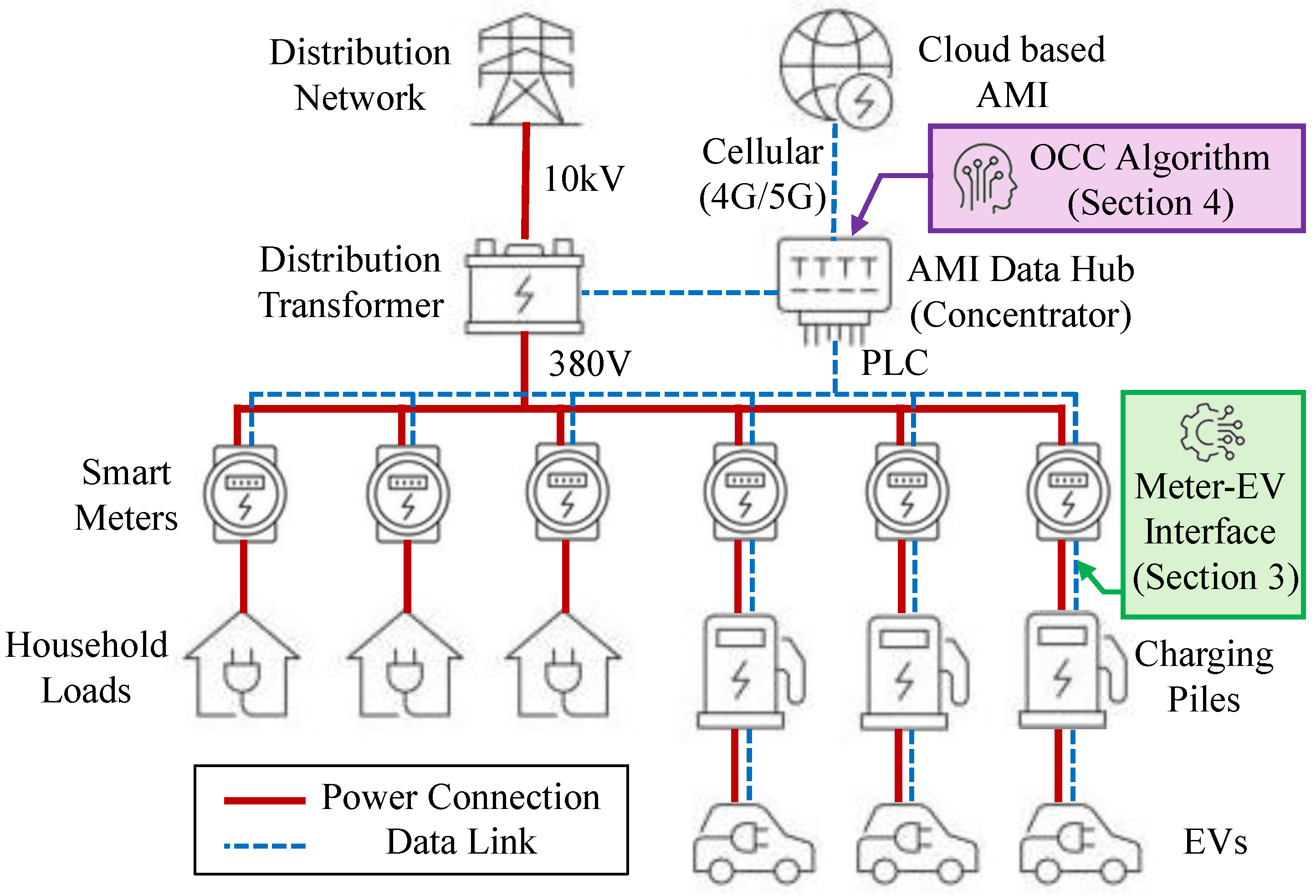

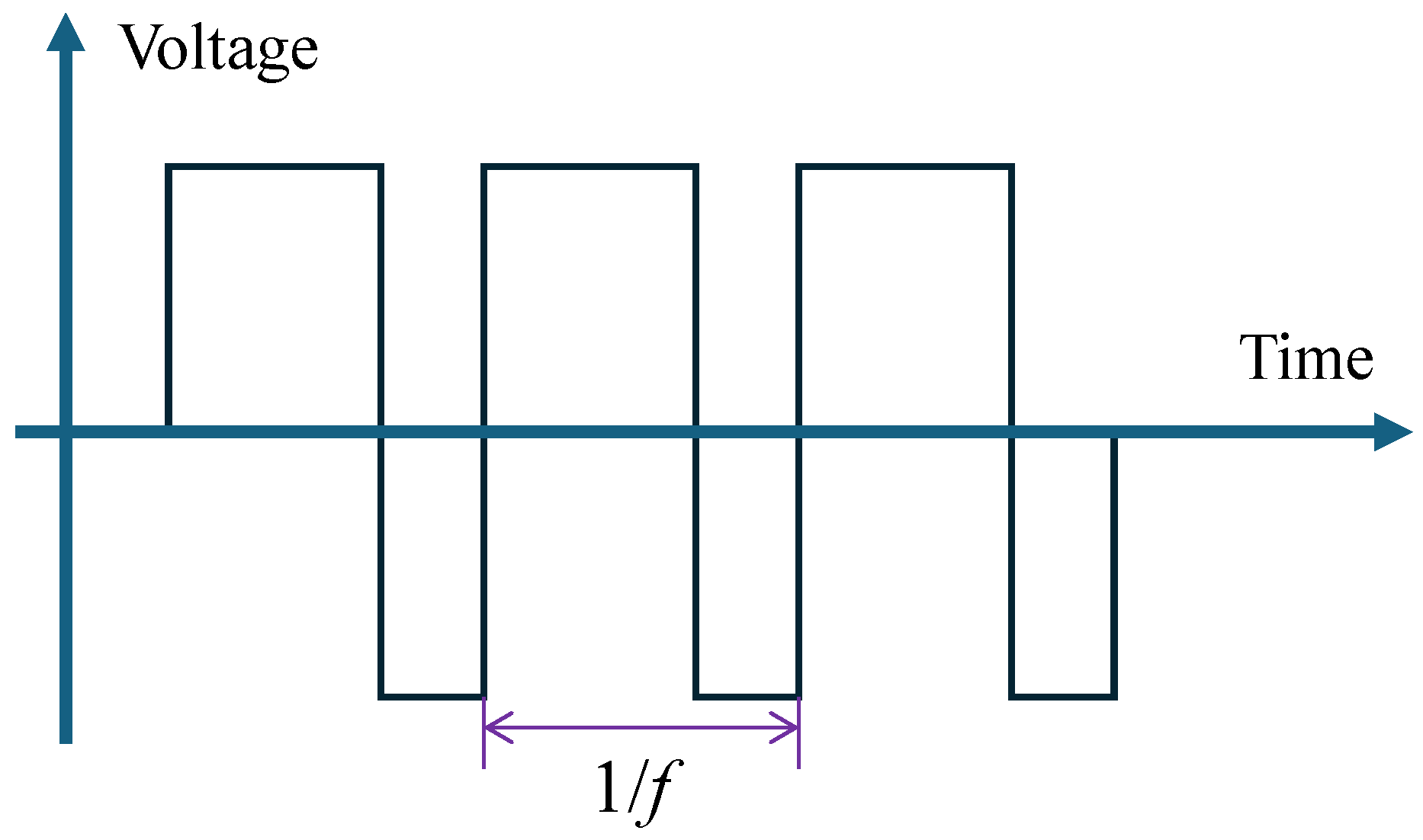


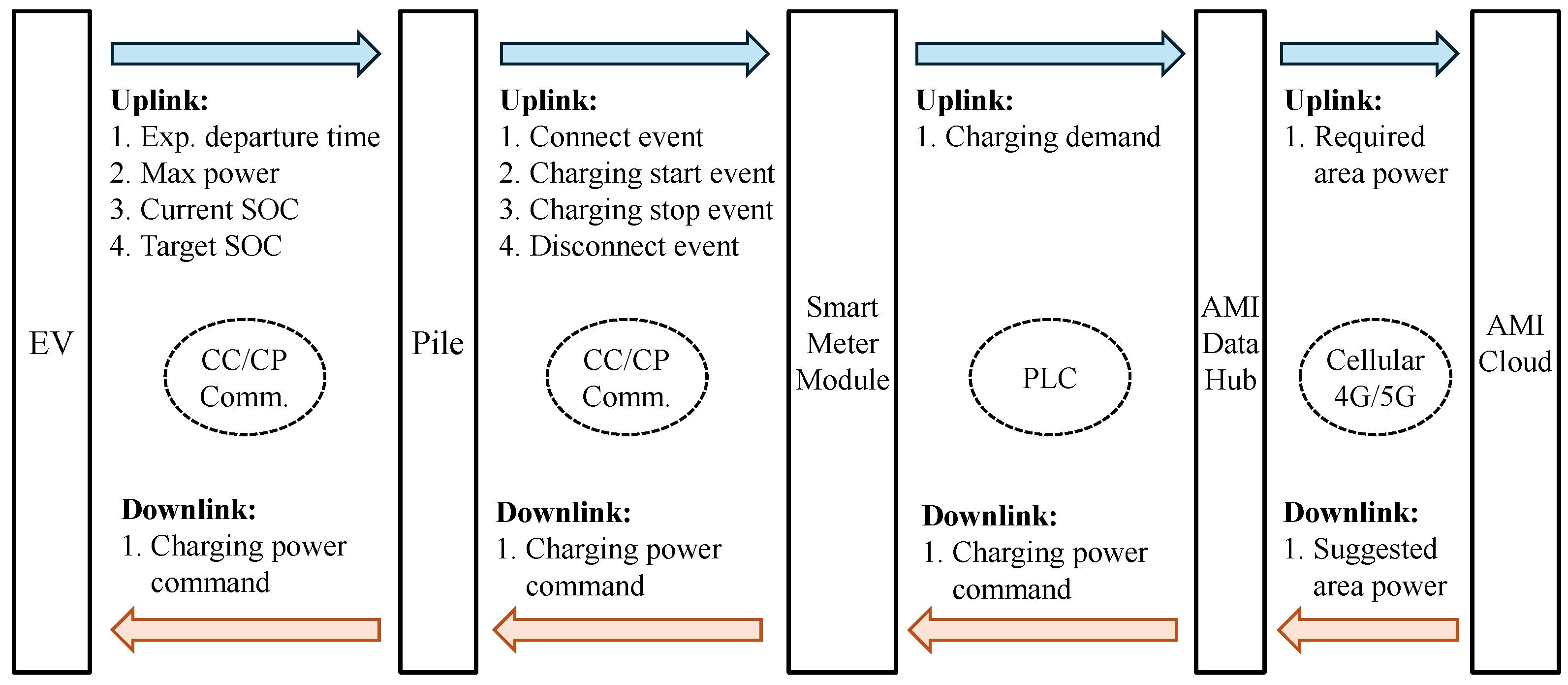

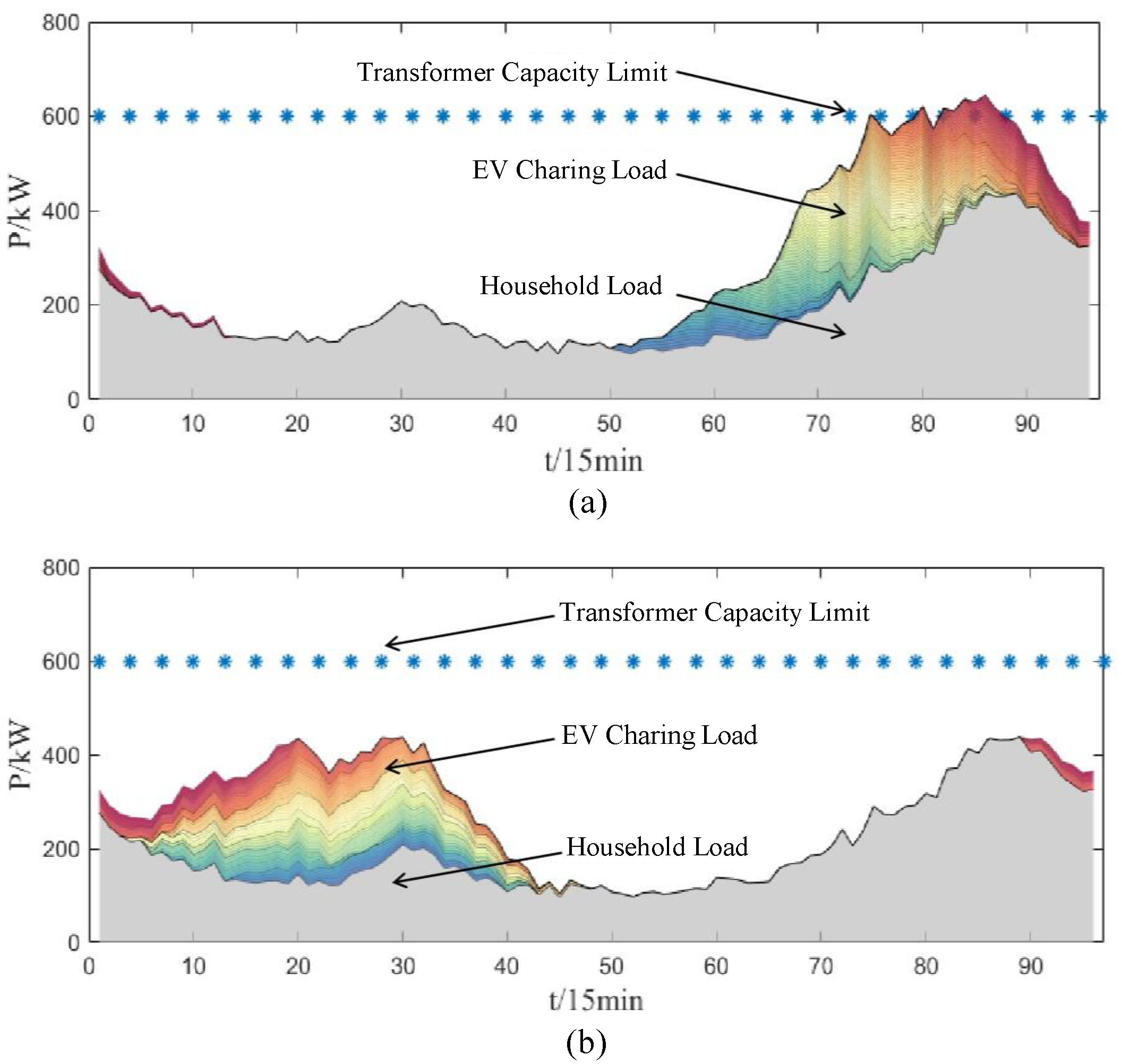
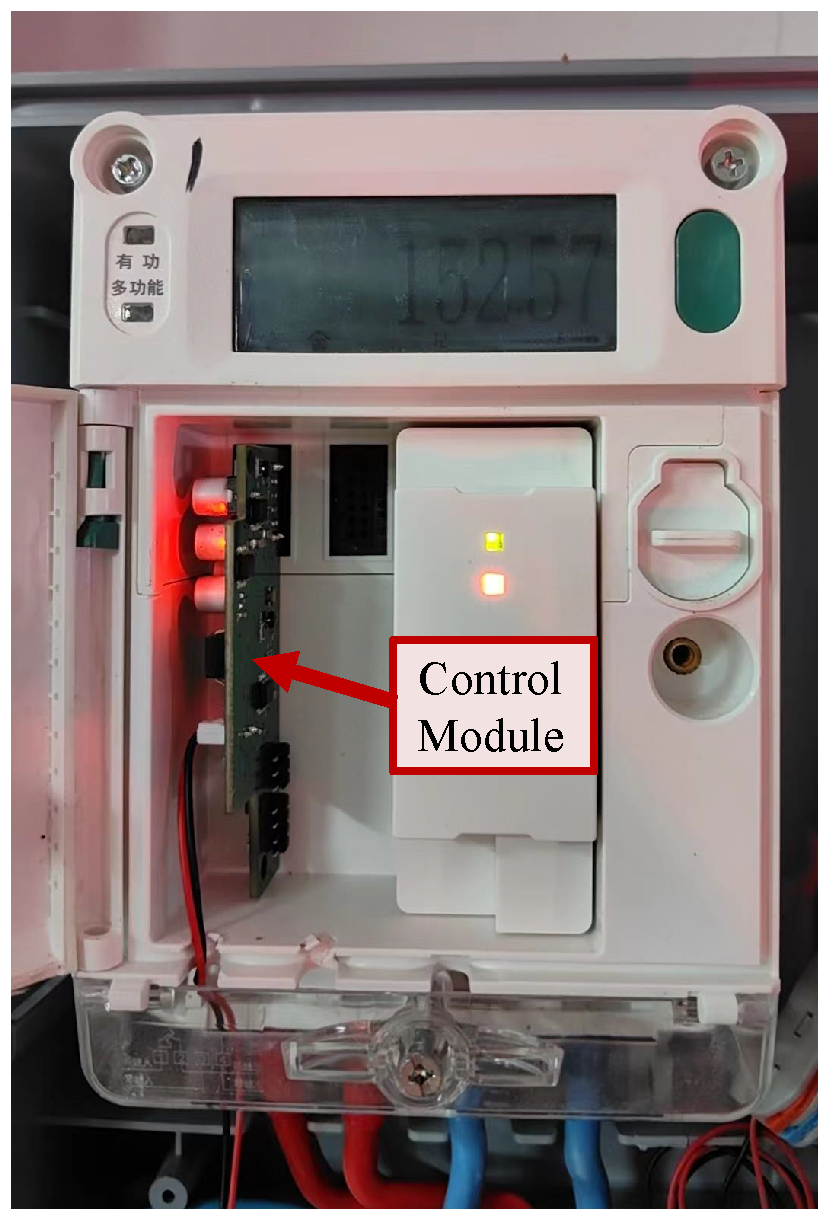

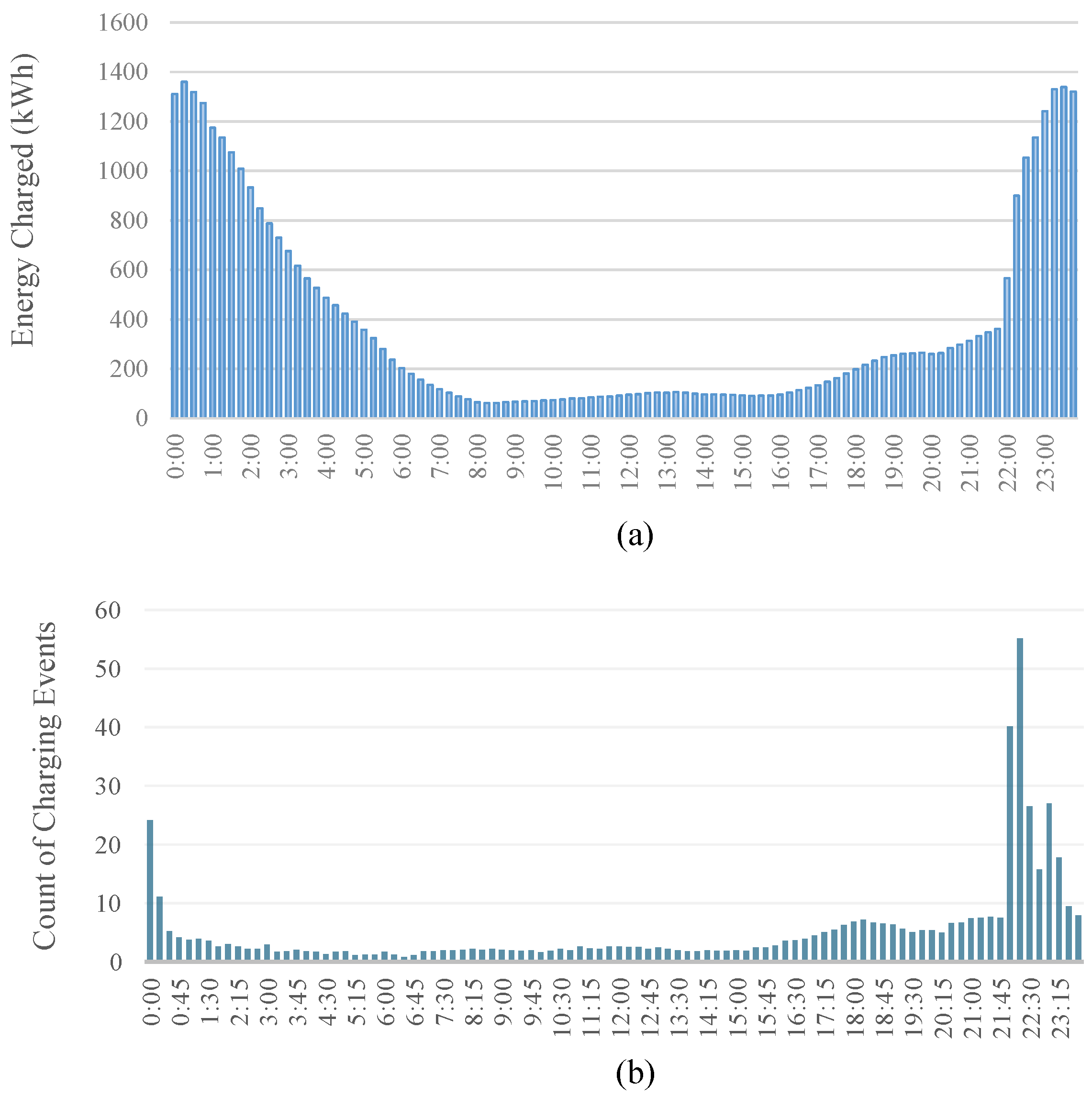

| PWM Duty Cycle D | Maximum Charging Current |
|---|---|
| Charging pile not ready | |
| Digital communication establishing | |
| & | |
| Reserved | |
| Forbidden |
| Time Period | Rate (CNY/kWh) |
|---|---|
| Peak (8:00–22:00) | |
| Off peak (22:00–8:00) |
| Operational Results | Without OCC | With OCC |
|---|---|---|
| Peak load (kW) | ||
| Peak-to-valley (kW) | ||
| Total charging cost (CNY) |
| Field Test Results | Without OCC | With OCC |
|---|---|---|
| Peak load (kW) | ||
| Peak-to-valley (kW) | ||
| Total charging cost (CNY) |
Disclaimer/Publisher’s Note: The statements, opinions and data contained in all publications are solely those of the individual author(s) and contributor(s) and not of MDPI and/or the editor(s). MDPI and/or the editor(s) disclaim responsibility for any injury to people or property resulting from any ideas, methods, instructions or products referred to in the content. |
© 2024 by the authors. Published by MDPI on behalf of the World Electric Vehicle Association. Licensee MDPI, Basel, Switzerland. This article is an open access article distributed under the terms and conditions of the Creative Commons Attribution (CC BY) license (https://creativecommons.org/licenses/by/4.0/).
Share and Cite
Li, A.; Chen, Y.; Xiang, X.; Xu, C.; Wan, M.; Huo, Y.; Geng, G. Orderly Charging Control of Electric Vehicles: A Smart Meter-Based Approach. World Electr. Veh. J. 2024, 15, 449. https://doi.org/10.3390/wevj15100449
Li A, Chen Y, Xiang X, Xu C, Wan M, Huo Y, Geng G. Orderly Charging Control of Electric Vehicles: A Smart Meter-Based Approach. World Electric Vehicle Journal. 2024; 15(10):449. https://doi.org/10.3390/wevj15100449
Chicago/Turabian StyleLi, Ang, Yi Chen, Xinyu Xiang, Chuanzi Xu, Muchun Wan, Yingning Huo, and Guangchao Geng. 2024. "Orderly Charging Control of Electric Vehicles: A Smart Meter-Based Approach" World Electric Vehicle Journal 15, no. 10: 449. https://doi.org/10.3390/wevj15100449
APA StyleLi, A., Chen, Y., Xiang, X., Xu, C., Wan, M., Huo, Y., & Geng, G. (2024). Orderly Charging Control of Electric Vehicles: A Smart Meter-Based Approach. World Electric Vehicle Journal, 15(10), 449. https://doi.org/10.3390/wevj15100449






